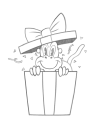Chapter 3b - Color Temperature - Moving Across The Spectrum (Continued)
$63.20
$79
You save $15.8
comments 11 submissions
Hi Marco, thank you so much for the course. In this chapter, you really helped me understand how to transition from one color to another, even though they can be complementary to each other. I learned to use a more neutral tone to bridge two colors and transition from warm to cool, or cool to warm. This principle appeared the most on the cliff that had reflective light, which appear to be blue, although this was a warm color study. I wouldn't have understood this without this chapter, thanks again. All critiques are welcome.
LESSON NOTES
This lesson is a continuation of chapter 3 were we are looking at more ways that nature moves between the two extremes of warm vs cool. At this point in the class we now have the tools to understand nature, paint it faithfully, as well as the tools to caricature it to our own aesthetics!
DOWNLOADS
Chapter 3b - Color Temperature - Moving Across The Spectrum (Continued).mp4
826 MB
COMMENTS
Tried the exercise in oil. First messy attempt but I reckon I'll improve if I do 50 more
Overall happy with it, but i wish i had spend a bit more time on this one, watching at it now.
I see so many ways in which both of these could have been better! But I am still happy because given where I started from this is much more vibrant and alive already.
At a certain point I had to stop. I spent about 30 minutes on the green guy, and one hour (!!!) on the purple one!
Making progress, but still struggling! I'm amazed at how I don't really need color picking when I understand better what is going on in the photo in terms of colors...
I think in this case the light of the blue monster is pushed a bit to far. Is there any principle that tells us that the light can pull colors on the other side of the wheal not as far as neightboring colours?
I started from a photoreference made myself in iceland... and then I just decided to turn it into a scene with some characters and added some flowers on the moss on the foreground.
I really tried to push the contrast between cold and warm more than what the photo gave me. I wasn't sure about the lighting sometimes though.
Feedback from anyone is always welcome of course!
I've been enjoying the course so far! Color is far more complex than I thought before I started this course.
I feel I don't use the Smudge tool successfully with Finger painting activated. It always makes areas I paint dirty, like the purple part on the upper belly in my picture.
Any Critique is welcomed!
So... I'm still learning so anyone can correct me if they disagree... I think you did really well in terms of temperature, but I think on the top the monster is missing some ambient/reflective light. About the smudging. Are you pianting in photoshop? have you played around with settings of the smudge tool? Photoshop also comes with some brushes that are made for smudging, and give nice texture. They are named KYLE brushes. They can help with getting more of a furry or painterly texture instead of blurry. As a last point I would not smudge the edges of the eyes too much because they end up blurry or furry. I hope this helps! ^_^
Hi Marco, thank you so much for the course. In this chapter, you really helped me understand how to transition from one color to another, even though they can be complementary to each other. I learned to use a more neutral tone to bridge two colors and transition from warm to cool, or cool to warm. This principle appeared the most on the cliff that had reflective light, which appear to be blue, although this was a warm color study. I wouldn't have understood this without this chapter, thanks again. All critiques are welcome.
I've only watched to chapter 3b but I love this course so much. I've always enjoyed your youtube stuff and I gotta say this works really well even with the longer lessons.
Hi, these exaples are great to learn, but i dont realy understand how can I study this principles. Should i do this by studying from photo refrences, or using my emagination to combine different colours. How your students in real class do this? BTW thanks for a great colour understanding explonation, as a begginer in colour theory, that grants me so much viable information!)
I've found the colour studies like in chapter 2b to be a nice way to study this. E.g. Identifying light vs shadow areas, which ones are warm vs cool, finding the local colours, then experiment by pushing them warmer/colder in various directions as shown in the video here. Do lots of them.
I've got a question about cool colors how do I know if I'm using right colors for cool temperature. its goes off to a-lot of different colors?
Bucci says a few times in the lessons that there is no real 'right' or 'wrong', and these studies are more about exploring what's possible/what works. The rule of thumb he's using here is: start with the local colour (green on the monster), and push she shadow colours colder for the parts facing the cold blue sky, and push them warmer for the parts facing the warm light reflected off the ground.













